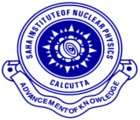Speaker
Description
Determining the neutrino mass ordering (MO) remains one of the major unknowns in the standard three flavor neutrino oscillation physics. At present we only know that $m_2 > m_1$ from solar neutrino data, i.e sign of $\Delta m_{21}^2$ is positive. However, we do not know if $m_3 > m_1$ (normal ordering) or $m_3 < m_1$ (inverse ordering). The future reactor based neutrino experiment JUNO is expected to measure MO with more than $3\sigma$ significance. However, the presence of neutrino non-standard interactions (NSIs) may affect the sensitivity of JUNO towards measuring the neutrino mass hierarchy. In this work, we perform a phenomenological study of neutrino oscillation along with the scalar non-standard interaction in determining neutrino mass hierarchy at JUNO. We find that in the presence of scalar NSI which appears as a correction to the neutrino mass term, the survival probabilities $P_{ee} ~\text{and}~ \bar{P}_{ee}$ depend upon the $\delta_{\rm {CP}}~$ and octant of $\theta_{23}$ even in a vacuum, which is not the case, had the scalar NSI been absent in the Hamiltonian. We explore the role of diagonal scalar NSI parameters $\eta_{ee}, \eta_{e\mu},$ and $\eta_{\tau\tau}~$ and it is noted that $\eta_{ee}$ significantly affects the mass ordering determination of JUNO. We have also found that the presence of scalar NSI parameters can affect the measurement of $\theta_{12}$.

